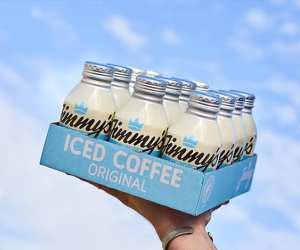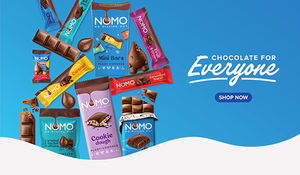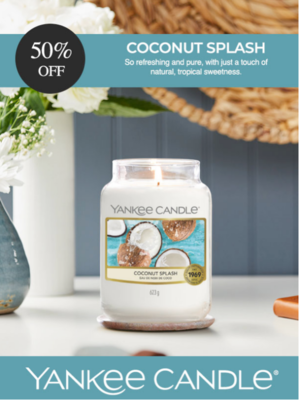Discover hints and tips to make your homemade ice cream soft, fluffy, and scoopable. Learn the secrets to the perfect texture, from ingredients to storage, for deliciously creamy results.
If you’ve ever found yourself wrestling with a tub of homemade ice cream that’s as hard as a rock, you’re not alone. I’ve been there, reaching for a spoon, only to feel I needed to find a hammer and chisel to get a scoop of my favourite flavour.
 It can be a common problem for many of us. But, be assured, homemade ice cream doesn’t have to be this way.
It can be a common problem for many of us. But, be assured, homemade ice cream doesn’t have to be this way.
In a previous article, we explained how freezing techniques, ingredients, and churning mistakes can cause that frustratingly solid texture.
👉🏽 Check our article out here – Why is My Homemade Ice Cream So Hard?
But we’re flipping the narrative. This article is all about how to achieve soft, fluffy, and easily scoopable homemade ice cream.
By following a few tips and tricks, you’ll avoid the dreaded ice cream battle and be able to enjoy a creamy, perfectly textured homemade ice cream treat straight from your freezer.
The Science Behind Ice Cream Texture
Ice cream’s texture results from a complex interplay between its ingredients and the freezing process.
The key components that affect texture are:
- Fat: Provides creaminess and helps trap air bubbles.
- Sugar: Lowers the freezing point, keeping the mixture soft, while preventing large ice crystals from forming.
- Air: Incorporated during churning, creating a light, fluffy texture.
- Ice Crystals: Smaller crystals result in a smoother texture.
The balance of these elements, along with proper freezing techniques, determines the final texture of your ice cream.
Common Problems and Solutions for Hard Ice Cream
Problem 1: Over-churning the Ice Cream
 Over-churning can lead to a dense and hard ice cream texture. When your mixture is churned for too long, larger ice crystals form, making your ice cream gritty and solid.
Over-churning can lead to a dense and hard ice cream texture. When your mixture is churned for too long, larger ice crystals form, making your ice cream gritty and solid.
Solution:
Stop churning your ice cream when it reaches a soft-serve consistency. After churning, allow it to set in the freezer. This prevents large ice crystals from forming.
Problem 2: Not Enough Sugar or Fat
Sugar and fat are essential for creating a soft texture in ice cream. Sugar helps lower the freezing point, keeping the mixture soft, while fat adds creaminess and airiness.
Solution:
Use high-viscosity sweeteners such as honey or glucose syrup, which keep the base smooth by preventing full crystallisation. Additionally, make sure to use heavy cream or add more egg yolks to create a custard base for added richness.
Problem 3: Freezer Burn and Air Exposure
If your ice cream is exposed to air in the freezer, it will form ice crystals on the surface, making it hard and unappealing.
Solution:
Store your ice cream in an airtight container. Place a layer of wax paper or cling wrap directly on top of the ice cream before sealing the lid to minimize air exposure(
👉🏽 For more details, check out our in-depth guide on ice cream storage solutions.
Problem 4: Using Low-Fat Dairy Products
Ice cream relies on fat to trap air bubbles, which create a fluffy texture. Using low-fat milk or cream leads to an icy texture instead of the rich, fluffy consistency you want.
Solution:
Stick to high-fat dairy products like heavy cream, which helps maintain the structure and airiness of the ice cream. You can also use sour cream or cream cheese for a richer, tangier result.
More Tips for Soft, Fluffy Ice Cream
Having discussed a range of common problems and their solutions, it’s clear that achieving perfectly soft and scoopable ice cream is possible with the right approach.
Beyond troubleshooting, there are also a handful of key techniques that can streamline your ice cream-making process, ensuring consistently smooth and fluffy results.
By applying these methods, you’ll be well on your way to mastering the art of homemade ice cream.
1. Add Alcohol for Softness
A small amount of alcohol, such as rum or vodka, can help keep your ice cream soft because it lowers the freezing point.
Be careful not to overdo it, though – too much alcohol can prevent your ice cream from freezing properly as alcohol can act like an anti-freeze.
👉🏽 For more information on the delicate balance of using Alcohol in Ice Creams check out our article – The Art and Science of Blending Alcohol with Ice Cream.
2. Use Stabilisers Like Gelatin
Stabilisers like gelatin or cornstarch can prevent the formation of large ice crystals and help the mixture retain air, leading to a smoother and more scoopable ice cream.
3. Control Mix-Ins
If you like adding chunks of fruit or chocolate, make sure they are properly chilled before mixing them into the churned ice cream.
Room-temperature mix-ins can cause the ice cream to melt prematurely and refreeze with a grainy texture.
Dairy vs Non-Dairy Base Ingredients
Dairy-based ice creams typically contain more fat, resulting in a creamier texture and better scoopability. Non-dairy alternatives often require additional stabilisers or emulsifiers to achieve a similar texture.
 Examples:
Examples:
- Coconut Milk: High in fat, creates a creamy texture similar to dairy.
- Almond Milk: Lower in fat; may require additional thickeners.
- Soy Milk: Protein content helps create a smooth texture.
- Oat Milk: Naturally creamy with a neutral flavour; contains beta-glucan, which can help create a smooth texture. However, it may still benefit from additional stabilisers for optimal consistency in ice cream.
Each of these non-dairy alternatives brings its own unique properties to ice cream making, affecting both texture and flavour. Experimenting with different combinations of these milk alternatives and stabilisers can help achieve the desired creamy texture in non-dairy ice creams.
Comparison of Stabilisers
Stabilisers help maintain ice cream’s texture by preventing ice crystal growth and controlling melting. Here’s a brief comparison:
- Egg Yolks: Natural stabiliser that adds richness.
- Cornflour (Cornstarch): Thickens without adding fat; good for low-fat recipes.
- Gelatine: Creates a smooth, creamy texture.
- Guar Gum: Prevents ice crystals and improves scoopability.
- Xanthan Gum: Enhances creaminess; works well in non-dairy ice creams.
Troubleshooting Guide
Even when following tips, issues can arise. Here are some common problems and solutions:
- Icy Texture: Re-churn after partial melting; add more stabiliser.
- Too Soft: Increase fat content or reduce sugar.
- Grainy Texture: Use finer sugar; ensure proper dissolution of ingredients.
- Melts Too Quickly: Increase stabiliser; reduce sugar content.
Sweeteners and Their Effects on Ice Cream Texture
Step-by-Step Guide for a Basic Soft and Scoopable Ice Cream Base
Following is an easy step-by-step guide to making a basic soft and scoopable ice cream:
- Combine 500ml double cream, 300ml whole milk, and 150g caster sugar in a saucepan.
- Heat until sugar dissolves; do not boil.
- In a separate bowl, whisk 4 large egg yolks until pale and thick.
- Slowly pour the warm cream mixture into the egg yolks, whisking constantly to prevent curdling.
- Return mixture to the saucepan; cook over low heat until it thickens slightly (about 75°C).
- Remove from heat; stir in flavourings (e.g., ground ginger).
- Chill thoroughly in the fridge for at least 4 hours or overnight.
- Churn in an ice cream maker until soft-serve consistency is reached.
- Freeze for at least 4 hours before serving.
Freezing Methods and Ice Cream Texture
 The method of freezing significantly impacts ice cream texture, with traditional freezers potentially creating larger ice crystals due to slower freezing, blast freezers producing smoother textures through rapid freezing, and liquid nitrogen achieving ultra-smooth results by instantly freezing the mixture and forming very small ice crystals.
The method of freezing significantly impacts ice cream texture, with traditional freezers potentially creating larger ice crystals due to slower freezing, blast freezers producing smoother textures through rapid freezing, and liquid nitrogen achieving ultra-smooth results by instantly freezing the mixture and forming very small ice crystals.
- Traditional Freezer: Slower freezing can lead to larger ice crystals forming.
- Blast Freezer: Rapid freezing creates smaller ice crystals for a smoother texture.
- Liquid Nitrogen: Instant freezing results in very small ice crystals for ultra-smooth ice cream.
Adjusting Recipes for Different Ice Cream Makers
Understanding how each ice cream maker can affect the outcome of your ice cream texture is also beneficial so that you can adjust your processes accordingly.
- Manual (Hand-Crank): Requires more effort; may need longer churning time.
- Electric (Bowl-Freeze): Pre-freeze bowl for at least 24 hours; faster churning results.
- Compressor Models: No pre-freezing needed; consistent results; can make multiple batches.
Storage Tips to Keep Your Ice Cream Soft and Scoopable
 One of the biggest factors in ensuring your ice cream remains soft and scoopable is proper storage. Once your ice cream is churned and frozen, how you store it makes all the difference in maintaining that ideal texture. Here are some essential tips:
One of the biggest factors in ensuring your ice cream remains soft and scoopable is proper storage. Once your ice cream is churned and frozen, how you store it makes all the difference in maintaining that ideal texture. Here are some essential tips:
- Use Airtight, Shallow Containers: The more surface area your ice cream has, the faster it will freeze, which can lead to a softer, smoother consistency. Airtight containers prevent air from getting in, reducing ice crystal formation.
- Press Cling Film on the Surface: Before sealing your container, press a layer of cling film or wax paper directly onto the surface of the ice cream. This prevents air from reaching the ice cream and keeps it from drying out.
- Freeze in Single-Serve Portions: Freezing ice cream in smaller containers can reduce the number of times it is exposed to air when opened. It also helps maintain texture, as less thawing and refreezing will occur.
👉🏽 For more comprehensive tips, check out our full guide in our article – Ice Cream Storage Solutions – Essential Tips To Keep Your Homemade Ice Cream Fresh!
FAQ Section
1. Why is my homemade ice cream still hard after following the tips?
Homemade ice cream can still be hard if it’s stored improperly or if the recipe lacks enough fat or sugar. Ensure you’re using high-fat dairy products and storing the ice cream in an airtight container to prevent air exposure.
2. Can I use non-dairy milk alternatives for making ice cream?
Yes, non-dairy alternatives like coconut milk, almond milk, soy milk, and oat milk can be used. However, you may need to adjust the recipe by adding stabilisers or emulsifiers to achieve a creamy texture.
👉🏽 For more information, please see our articles – Homemade Dairy-Free & Lactose-Free Ice Cream Recipes and Vegan And Dairy-Free Homemade Ice Cream Using Coconut Milk – both of which provide more detailed guidance.
3. What stabilisers can I use in my ice cream?
Common stabilisers include egg yolks, gelatine, cornstarch, guar gum, and xanthan gum. These help prevent ice crystal formation and maintain a smooth texture.
4. How can I make my ice cream softer without using alcohol?
You can add stabilisers like gelatine or cornstarch to your mixture. Additionally, ensure you’re using enough sugar and fat in your recipe, as these ingredients help lower the freezing point.
5. How long can I store homemade ice cream?
For optimal flavour and texture, homemade ice cream is best enjoyed within 2 to 4 weeks. After this period, you may notice changes in consistency and taste.
👉🏽 Check out our article – How Long Does Homemade Ice Cream Last In Your Freezer? – for more detailed information on the length of time you can store your homemade ice cream.
6. What should I do if my ice cream melts too quickly?
If your ice cream melts too quickly, consider increasing the stabiliser content or reducing the sugar in your recipe. High sugar content can cause ice cream to melt faster.
7. Can I make ice cream without an ice cream maker?
Yes! If you don’t have an ice cream maker, pour the mixture into a lidded, freezer-safe container and freeze it. Stir vigorously with a fork or whisk every 30 minutes for 2-3 hours to break up any ice crystals until smooth and creamy.
👉🏽 Check out our article – How to Make Homemade Ice Cream Without an Ice Cream Maker – for more detailed guidance.
Final Scoop
Achieving the perfect homemade ice cream that is soft, fluffy, and scoopable may take a little extra attention to ingredients and technique, but the results are well worth it and as you become more adept at making your own Homemade Ice Cream these techniques will become second nature to you.
From adjusting the churning process to storing it correctly, each step plays a critical role in your final product. By following these simple tips, you’ll be able to enjoy your homemade ice cream with the perfect texture, every time.
 We hope that you have enjoyed our article – How To Make Homemade Ice Cream Soft, Fluffy, And Scoopable – and most importantly that we have been able to provide you with valuable insights, tips and guidance so that you can achieve the softest, fluffiest and easily scoopable homemade ice cream.
We hope that you have enjoyed our article – How To Make Homemade Ice Cream Soft, Fluffy, And Scoopable – and most importantly that we have been able to provide you with valuable insights, tips and guidance so that you can achieve the softest, fluffiest and easily scoopable homemade ice cream.
If you have any questions, please do drop us a comment below and we’ll be happy to get back to you.
Stay connected for more homemade ice cream inspiration! Share your homemade ice cream masterpieces with us on social media, and connect with a community of ice cream enthusiasts. Join us for mouthwatering recipes, expert tips, and exclusive updates. Follow us on Pinterest, Instagram, Facebook, and X by clicking on any of the social media icons below.
Disclosure: This post contains affiliate links. If you click on these links and make a purchase, we may earn a small commission at no additional cost to you. This helps support our website and allows us to continue creating content. Thank you for your support!














































Hi Cherie,
I just wanted to say how much I appreciated your article on making homemade ice cream soft, fluffy, and scoopable. Your detailed guide is incredibly helpful, and I’m excited to try this easy recipe myself!
The way you laid out the process makes it seem both accessible and foolproof. I love how you explained the importance of balancing key ingredients like fat, sugar, and air to achieve the perfect creamy texture. Your tips on using high-viscosity sweeteners and incorporating stabilizers such as gelatin or cornstarch are particularly insightful, and I’m eager to see how they enhance the final product.
Your step-by-step instructions are straightforward and highlight crucial details, like stopping the churning process at the right moment and the significance of proper storage techniques to prevent ice crystal formation. The idea of adding a small amount of alcohol to lower the freezing point is a clever touch that I look forward to experimenting with.
Thank you for sharing such a comprehensive and inspiring guide. I can’t wait to make my batch of homemade ice cream and enjoy a delicious treat with the perfect texture. I’ll be sure to report back on my results and perhaps even share some pictures on social media!
All the Best,
Eric
Hi Eric,
Thank you for your comment and for sharing your thoughts. Very pleased to hear that you appreciated our article.
We do our utmost to provide clear guidance, hints, and tips to enable our readers to follow along with ease and confidence and to learn to make their own homemade ice cream treats, and in this particular article, to achieve soft, fluffy, and scoopable homemade ice cream.
This article, hones in on how best to achieve a soft and scoopable texture, which for some can be a challenge. We wanted to provide as many insights as possible, to aid our readers.
It’s rewarding to read that you found our article both helpful and inspiring to give it a try. We would love to hear how you get on.
We have a selection of other articles that provide guidance for a variety of abilities, from beginners to the more complex guides hoping to meet all our readers’ needs and should you get stuck, you’ll be able to find guidance in our many other posts.
Again, thank you for dropping by and sharing your thoughts.
All the best
Cherie 🍦🙂